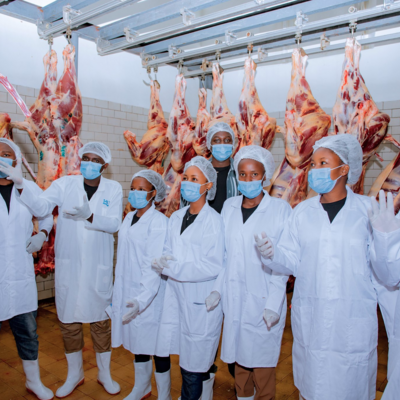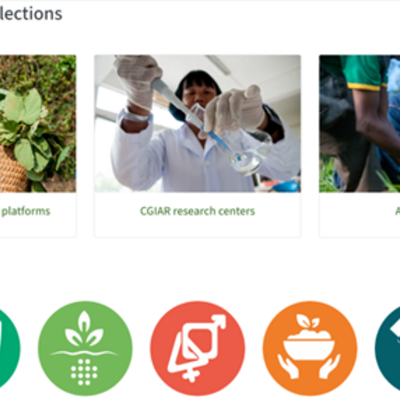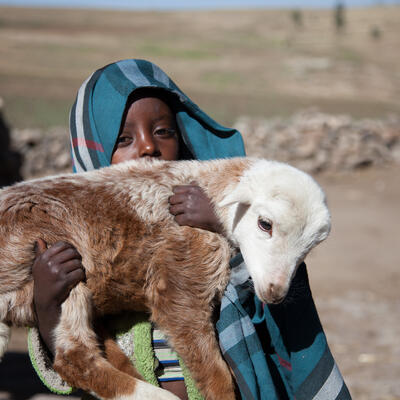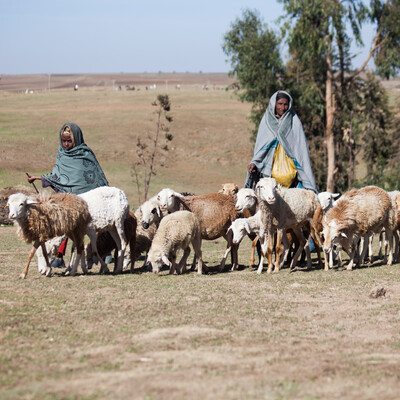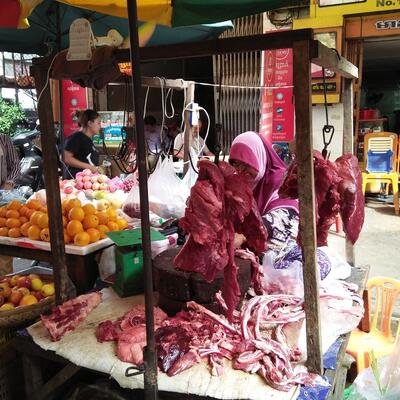
Setting up a joint CGIAR exhibition booth at ‘Celebrating FARA’ in South Africa
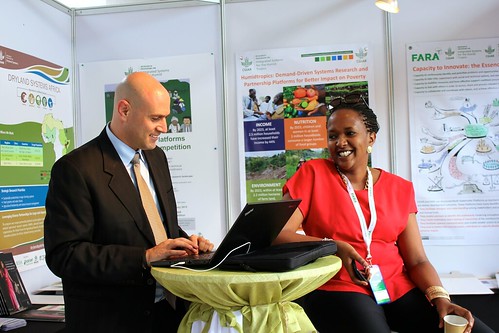
ILRI’s Iddo Dror and Muthoni U Njiru at the CGIAR booth in ‘Celebrating FARA’ event in South Africa, Nov 2014 (photo credit: CIP).
These are some highlights and lessons learned from participating at an event of the Forum for Agricultural Research in Africa (FARA) known as ‘Celebrating FARA’ which was held 26-28 November 2014 in Johannesburg, South Africa.
At the event, CGIAR centres came together to develop a joint exhibition booth to showcase CGIAR’s commitment to work with partners to contribute to Africa’s agricultural research agenda. The International Livestock Research Institute (ILRI) was represented by Jimmy Smith, the director general, Ewen Le Borgne, Iddo Dror and Muthoni Njiru.
This article concentrates on the collaborative effort of putting together a joint booth for the CGIAR at the event. You can read two informative articles about the event on the FARA and CGIAR websites.
In general, the joint developing and hosting of the CGIAR booth was successful. In terms of logistics, the generous and timely local support from Nicole Lefore and Thokozani Dhlamini of the International Water Management Institute (IWMI) in Pretoria, ensured that all printed materials were produced, collected, cleared at customs (for materials shipped) and eventually delivered to the events premises at the Birchwood Conference Centre in Johannesburg, in time.
 Additionally, CGIAR staff attending the event helped with setting up, running and setting down of the booth during the three-day event. The process of pulling together print materials (showing CGIAR work in Africa) from the 15 CGIAR centres spread across the world, was not easy but was successfully jointly coordinated by the Consortium office and centre communications teams.
Additionally, CGIAR staff attending the event helped with setting up, running and setting down of the booth during the three-day event. The process of pulling together print materials (showing CGIAR work in Africa) from the 15 CGIAR centres spread across the world, was not easy but was successfully jointly coordinated by the Consortium office and centre communications teams.
CGIAR communications staff attended and facilitated side events to encourage engagement and collaboration with partners attending the FARA event. Communication support provided included contributing to teamwork, remotely producing publications and posters for side-event sessions and the booth, attending end-of-day briefing sessions to share day’s achievements and handing out invitations, at the booth, for different side events.
Despite the successes, we identified areas for future improvement including:
- exploring ways to produce a CGIAR poster template highlighting the objectives, donors, partners, outcomes and websites of CGIAR research programs,
- giving a one-face ‘human’ image at exhibits for visual connectivity within CGIAR,
- formulating an exhibit pack to provide a universally recognizable feel of CGIAR,
- reducing the number of printed publications sent to exhibits, regardless of location, and instead using poster presentations, talks and short videos on specific ‘happenings’ (we received feedback on how overwhelming all the publications were),
- double-checking lists on what is and is not covered (by the organizer) under ‘exhibit costs’ before arrival and set up,
- organizing pre-visits with the event coordinator to finalize on all items to be supplied for an exhibition. This will improve preparedness and keep exhibit organizers from being overwhelmed at the start of events, and
- encouraging use of ‘intentional’ promotional materials such as flash drives with information about CGIAR.
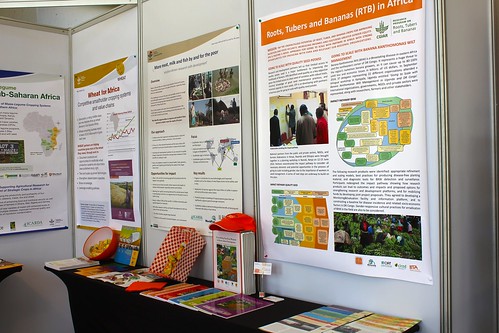 The importance of pre-selecting booth space was also an important lesson in this event. The team chose the front outdoor space, which exposed some of the materials to bad weather, where indoor booths would have served us best. There is also need confirm the use of pins for pinning up posters to avoid damage charges.
The importance of pre-selecting booth space was also an important lesson in this event. The team chose the front outdoor space, which exposed some of the materials to bad weather, where indoor booths would have served us best. There is also need confirm the use of pins for pinning up posters to avoid damage charges.
Other highlights of communication support included encouraging participation and creating awareness about CGIAR, responding to participant interest in freebies such as T-shirts, flash drives, pens and organizing pre-packed media packs for the press to maximize information dissemination to journalists attending media briefings.
The coordination of the booth’s planning and organizing was led by a group of people from different CGIAR centres and programs with Muthoni Njiru from ILRI leading the process of virtual planning via skype and bluejeans in the lead up to the event. Document management was supported by Google docs to enable co-creation and sharing of information.
In future, we hope to build on these lessons and other co-creating skills needed to produce interesting, informative and interactive exhibitions.
Feel free to share other lessons from working on joint CGIAR exhibitions in the comments section.





